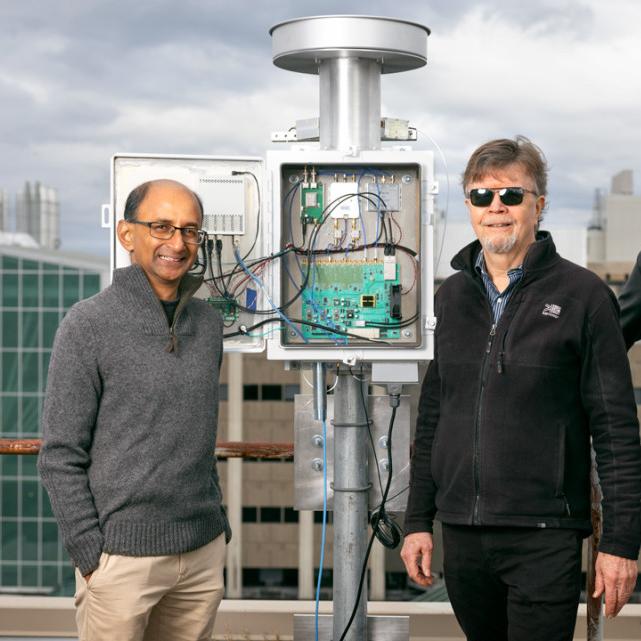A new program provides undergraduates, graduate students and postdoctoral researchers from the College of Engineering and the College of Arts and Sciences with hands-on experience in developing innovative small spacecraft missions in high-priority areas of space science.
The Cornell SmallSat Mission Design School (SMDS), began this summer with Cornell students, but in future years will be open to students and research professionals from universities all over the world.
Cornell is one of few universities with world-class expertise in both space science and spacecraft engineering, said Elaine Petro, assistant professor in the Sibley School of Mechanical and Aerospace Engineering and faculty lead.
“Using real NASA flight opportunities as the design guidelines, the interdisciplinary team produces an end-to-end mission that will deliver new astrophysical knowledge under strict budgetary, size and time limits,” Petro said.
Launch opportunities to low-Earth orbit are becoming increasingly available, leading to the explosive growth of small satellite deployment. The SMDS program focuses on building a mission concept that could be developed as a proposal to the recently launched Astrophysics Pioneers category of missions by NASA.
The inaugural SMDS cohort chose to develop a mission to probe the earliest universe – the so-called ‘dark ages,’ when the universe was still cooling from its initial formation, and before the appearance of the first stars and galaxies. To study this time, measurements must be made in radio frequencies, and since these would be interfered with by radio transmissions from the Earth, the best place to make these measurements is behind the moon.
“The mission concept the students designed would be an important step towards future, large-scale missions currently being considered by NASA and others,” said Dmitry Savransky, associate professor in the Sibley School and the Department of Astronomy (A&S) and part of the faculty team supporting the program. “It would measure the level of radio noise from all relevant sources that these future missions would have to contend with in order to make new discoveries about the earliest universe.”
During the first six weeks of the program, the cohort attended lectures from experts in the field then split into subteams to address different areas of the spacecraft design. The following two weeks consisted of active work on the spacecraft design and culminated in a final presentation.
The final presentation was reviewed by a committee of faculty in the field and industry professionals, including Ball Aerospace, the inaugural sponsor of SMDS. The cohort is expected to produce a paper to be submitted to Acta Astronautica.
“Key to the success of this school was having a team of mentors spanning both science and engineering disciplines with a wealth of experience working on NASA missions,” said SMDS team member Nikole Lewis, assistant professor of astronomy and deputy director of the Carl Sagan Institute (A&S). “Under the guidance of the mentors, the students certainly got an opportunity to engage in a true-to-life experience in pulling together a mission proposal. Although they were presented with many challenges in developing their mission, I hope that this experience will encourage their further participation in small satellite mission teams.”
In parallel with the main design project, the participants took part in a public engagement workshop, delivered by Ithaca’s Sciencenter and funded by Cornell’s Office of Engagement Initiatives. Participants learned about hands-on communication techniques and developed their own demonstrations for delivery to the public.
The program is led by faculty from both the Department of Astronomy and the Sibley School of Mechanical and Aerospace Engineering, most of whom are members of the Carl Sagan Institute, an interdisciplinary group founded to find life in the universe.
The SMDS team includes Mason Peck, the Stephen J. Fujikawa ’77 Professor of Astronautical Engineering in the Sibley School; Alex Hayes, associate professor in the Department of Astronomy and director of the Cornell Center for Astrophysics and Planetary Science (A&S); Andrew van Paridon, visiting lecturer in the Sibley School; and doctoral candidate Josh Umansky-Castro (Sibley School).
Erin Philipson is a communications specialist for the College of Engineering.
Read the story in the Cornell Chronicle.





